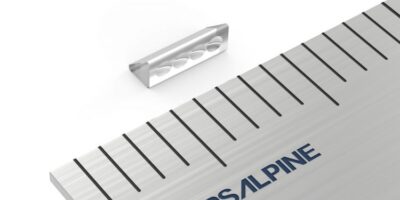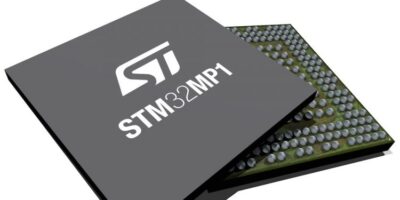Optical networks for data centres can maximise density in optical transceivers using the FLHL2 series lens array with mirror from Alps Alpine.
IoT technology and artificial intelligence (AI) has increase IP traffic globally. This is expected to be increased further by the introduction of 5G mobile and wireless networks. As a result, optical transceivers used in facilities like data centres will need to be much faster and have higher density, demanding even greater size reductions and high-density mounting of components.
The FLH2 series was developed by Alps Alpine in responses to these trends. The lens array has a 0.75mm lens pitch and integrates condenser lens and mirror components of an optical transceiver receiver. The array measures just 1.3 x 1.3 x 3.5mm. Now, instead of have to position the lenses and mirror separately to convey light to the photodiode, this integrated lens reduces the number of parts and shortens the optical distance to contributing to downsizing the optical transceivers. Having fewer components also reduces the work required for transceiver assembly, leading to lower costs, adds Alps Alpine.
The lead-free glass used is (RoHS-compliant).
Mass production will begin in August this year and Alps Alpine has also announced that it will develop lens arrays with 0.5mm and 0.25mm lens pitches in anticipation of future market requirements for downsizing and multi-channel transceivers as IoT spreads and 5G services are introduced.
Alps Alpine developed one of the world’s smallest glass lenses for submarine cables in 2000.
Alps Alpine was formed on January 1, 2019, when Alps Electric and Alpine Electronics integrated. The company has over 42,000 employees.
Alps Alpine has expertise in core devices, system design and software development and serves the automotive, mobile devices and consumer electronics markets, as well as new sectors such as energy, healthcare and industry.






